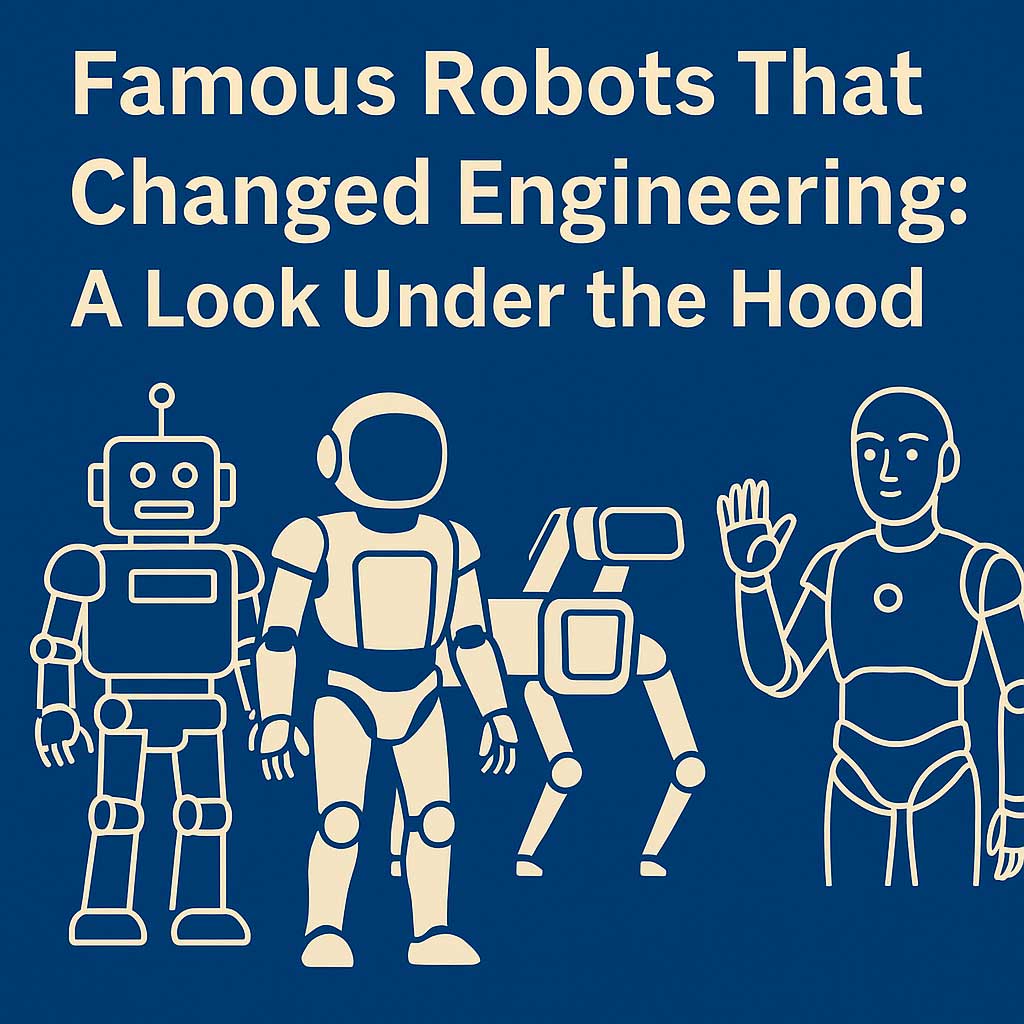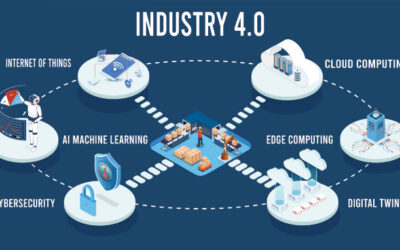From silver screens to factory floors, robots have long captured our imagination. In movies and television, they’ve been everything from helpful companions to existential threats—think R2-D2, The Terminator, or Wall-E. While Hollywood often leans into fantasy, many of the ideas introduced through fiction have inspired real-world innovation. For engineers, robots are more than cinematic icons—they’re complex systems that represent the convergence of mechanics, control theory, artificial intelligence, and design.
This article takes a look under the hood of some of the most famous robots—both fictional and real—and explores the engineering breakthroughs that brought them to life. Whether you’re designing automation systems or working on human-machine interfaces, these iconic machines offer valuable lessons on where robotics has been—and where it’s going.
1. Shakey the Robot (1966) – The First Mobile Robot to Reason
Developed by SRI International, Shakey was the first robot capable of making decisions based on its environment. Combining computer vision, path planning, and a basic understanding of its surroundings, Shakey laid the groundwork for autonomous navigation.
Engineering Legacy:
- Integrated logic-based AI with physical movement
- Used early SLAM (Simultaneous Localization and Mapping) principles
- Programmed in LISP and operated through a DEC PDP-10 mainframe
2. ASIMO (2000) – Honda’s Humanoid Marvel
ASIMO (Advanced Step in Innovative Mobility) captivated audiences with its ability to walk, run, and even climb stairs. But to engineers, ASIMO was a triumph of motion control, balance mechanics, and real-time sensor fusion.
Key Engineering Feats:
- 34 DOF (Degrees of Freedom) for human-like motion
- Dynamic balance algorithms to handle bipedal locomotion
- Integrated vision and sound recognition for human interaction
3. Boston Dynamics’ Spot – The Agile Robot Dog
While initially developed as a military support unit, Spot has become a commercial platform for surveillance, inspection, and even creative applications. Its stability, adaptability, and terrain navigation are a masterclass in mechanical and software engineering.
Behind the Design:
- Hydraulic and electric actuators for fluid motion
- Real-time terrain adaptation using LIDAR and stereo cameras
- SDK access for custom applications and third-party integration
4. Robonaut (NASA) – Human-Like Dexterity in Space
Designed to assist astronauts on the ISS, Robonaut has highly dexterous hands and a flexible upper body that mimics human movements. Engineers admire its compact design and ability to interface with standard tools used aboard spacecraft.
Engineering Highlights:
- Force-feedback control for fine manipulation
- Advanced joint actuators with torque sensors
- Radiation-hardened electronics for extraterrestrial environments
5. Sophia (2016) – Robotics Meets Human Interaction
Created by Hanson Robotics, Sophia is known for her life-like facial expressions and AI-driven conversation. For roboticists, she’s a case study in blending mechanical design with NLP (natural language processing) and expressive actuators.
What Makes Her Tick:
- 60+ facial actuators for expression
- Speech recognition and machine learning via cloud-based APIs
- Synthetic skin embedded with sensors and micro-motors
6. T-800 Endoskeleton (Fictional, but Influential)
While the Terminator is pure science fiction, its design has influenced real-world robotics—especially exoskeletons and autonomous decision-making systems. Engineers often cite it as an inspiration behind biomechanical design and reinforcement learning concepts.
Why It Resonates:
- Modular joint design inspires wearable robotics
- Representation of AI autonomy, ethics, and human-robot interaction
- Cultural impact leads to funding interest in defense robotics
Takeaway: Beyond the Hype
As robotics continues to evolve—from factory automation to AI-powered humanoids—the legacy of these pioneering machines lives on in labs, production lines, and research centers around the world. Each robot we’ve looked at reflects a turning point in engineering—proof that innovation doesn’t just come from theory, but from building, testing, and pushing past failure. For engineers, these robots aren’t just artifacts of history or pop culture—they’re blueprints for what’s possible next. The challenge now isn’t just to admire them, but to design what comes after.




